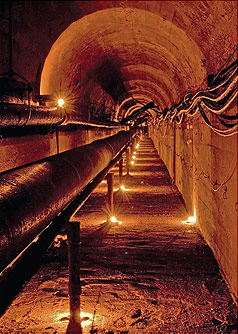 |
 |
|
Digital Energy  Protection & Control Protection & Control  Transmission Protection Spotlight Transmission Protection Spotlight |
|
|
|
 |

In dense urban areas, the only electricity supply is often through underground cables where fault can make a key piece of infrastructure unavailable and result in large outages within the city. Locating a fault quickly and accurately on an underground system allows for timely dispatch of maintenance crews to restore service as quickly as possible. However there are often other important drivers for fast and accurate fault detection, particularly environmental concerns.
Often, high voltage power cables are surrounded by insulating oil that is circulated to provide additional cooling for the cables. Isolating and cutting off the oil to the affected area will drastically
reduce the release of this oil into the surrounding environment. This reduces the costs for repairing and restoring the cable, it also limits the environmental impact and associated clean up and remediation costs.
Oscillography records obtained from protective relays at both ends of the cable can be post processed to calculate the fault distance fairly accurately. However, this post processing requires
oscillography files to be collected and takes additional time following an event. Physically testing the cable to locate failures is a time-consuming process and often places stress on the cable
leading to additional failures elsewhere, increasing the time and money needed to restore the cable to service.
Fault indicators may aid in locating the fault, but require personnel to drive around trying to find the corresponding fault indicator. Traffic congestion caused by non-functional traffic signals during
power interruptions can slow down utility personnel trying to drive between electrical vaults to find the fault location, leading to longer service interruptions.
In addition to providing sensitive and secure line current differential protection for MV, HV and EHV applications, the Multilin L90 features a double-ended fault location algorithm that can provide system operators with extremely accurate fault type and location information immediately after a fault. Highly directed actions can then be taken, like shutting down specific oil pumps and dispatching maintenance crews to the exact fault location, minimizing the environmental impact and duration of the interruption.
|
 |
|

 Protection & Control
Protection & Control  Transmission Protection Spotlight
Transmission Protection Spotlight